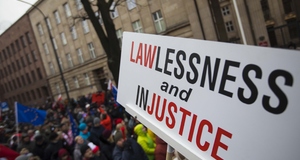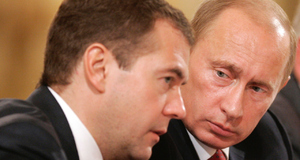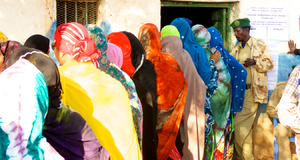From Cornell International Affairs Review VOL. 6 NO. 1Lessons on Government from one Non-State Entity to Another: How the Irish Republican Movement Informs Hezbollah's Attempt at the Clausewitzian Political ArmHezbollah and the IRA: Beginning Comparative Analysis and Shared CharacteristicsHezbollah has achieved a successful entrance into the Lebanese political arena, and in so doing has garnered a degree of international recognition and a current bloc of popular support. However, a succinct overview of the Northern Irish republican movement’s transition into government shows that a non-state entity’s sociopolitical gains will only sustainably exist through a developed political branch of the Clausewitzian Trinity. The Irish Republican Army (IRA) provides a reasonable case for comparative analysis with Hezbollah; the juxtaposition of these two groups is made possible by the fact that despite being politically, geographically, religiously, and culturally dissimilar, the IRA and Hezbollah display multiple shared characteristics. The Irish Republican Army of the late twentieth century arose out of grave social, economic, and political inequalities Ideologically, both the IRA and Hezbollah allow religion to become tied to their respective resistance movements. Whereas Hezbollah maintains strong links to the Islamic faith, the Northern Irish “Troubles” pit an overwhelmingly Irish Catholic republican base against the pro- British Protestant population. Additionally, the ideological context buoying up the two militant movements was created by the presence of an occupying force and by the imposition of a disagreeably foreign way of life. For the southern Lebanese, Israel represented this occupying force; for the Northern Irish Catholic population, the British government and its privileged Protestant populace threatened Irish unity and led to unequal political and economic conditions. In the political arena, the IRA and Hezbollah also share many commonalities. Like the Syrian and Iranian-backed Hezbollah group, the IRA has always attempted to expand its foreign relations, often benefiting from financial backers and arms suppliers in the Western world (which has included millions of dollars of support from American citizens). Most strikingly, the cardinal political demands of the Irish Republican Army parallel those of Hezbollah: the IRA demands the withdrawal of all British forces and the termination of all political intrusion into Northern Irish governance, as well as greater political autonomy and stronger ties with Ireland (which is geographically-linked to Northern Ireland). Additionally, just as many Lebanese view Hezbollah as the people’s protectors, the Irish republican movement has spent the past five decades fighting for the political and social equality of the Northern Irish Catholic population. However, although these important similarities exist, which make comparison between the two militant organizations possible, the Irish republican movement’s political success presents a more successful Clausewitzian model. The TroublesThe Irish Republican Army of the late twentieth century arose out of grave social, economic, and political inequalities in British-controlled Northern Ireland. In the late 1960s, non-violent political activists began campaigning in Northern Ireland against the “second-class status of Catholics with regards to voting rights, job opportunities, and housing”; sadly, this predominantly-Catholic movement was met with violent animosity by Protestant business owners and political heads.18 Political commentator Deaglan de Breadun writes, “The political system in Northern Ireland, dominated by an inflexible unionist elite, was unable to accommodate the demands of the Catholics and integrate them into a pluralistic, inclusive society with opportunity for all. The fact is that Northern Ireland was set up to maintain Protestant supremacy.”19 By the early 1970s, the Troubles had officially begun; the Troubles denote a period in Northern Ireland history that saw the rise of a largely Catholic paramilitary force—the IRA—confronting British soldiers and pro-British Protestant forces with the aim of removing British influence from the land, and providing equality to the Catholic population. However, as the movement progressed into the 1990s, although billions of dollars of British military, intelligence, and business assets had been drained, not to mention the loss of thousands of pro-British Unionist lives, the Irish Republican Army found itself in a similar quandary to what Hezbollah faces today: the realization that military means alone cannot overcome enemy resources, although the organization’s ideological foundations and popular support call for continued resistance. Reshaping the Arms of the Irish Republican MovementIt was during this predicament that Sinn Fein leader Gerry Adams helped to redirect the Irish republican movement. It was the work of Adams, and more broadly, the work of Sinn Fein, which helped Irish republicanism access lasting victories in the political branch of Clausewitz’s Trinitarian model. As the growing political arm of the Northern Irish republican movement, Sinn Fein held political objectives that had traditionally aligned with the sociopolitical goals of the Irish Republican Army. The first landmark step that Sinn Fein took in reshaping the Irish republican movement was to move away from the Armalite and ballot box strategy, thus separating the military leadership of the republican movement from Sinn Fein’s political leadership. By distancing the political arm from the movement’s more militaristic arm, Sinn Fein tacitly acknowledged that “the IRA’s activities were often counterproductive and hindered the growth of the republican movement’s political influence.”20 The separation given between the military and political arms led to numerous strategic benefits for the Irish republican movement. The distancing act empowered the republican government arm and opened the movement up to a broader popular base. The delicate balance between the arms of the Clausewitzian Trinity improved as the public sphere became more receptive to the republicans’ shift to honest politics: “While Sinn Fein continues to press to make partition history, the more immediate and tangible gains of the agenda make the party’s revisionist republicanism attractive to the nationalistic electorate for which armed struggle and militant paths to unity were always a minority taste.”21 Whereas the Irish republicans had generally utilized the political arena in the service of military objectives, Sinn Fein reversed this paradigm. The military’s presence was to be gradually tuned out, and in the rare instances when the military arm of the resistance was required, it became an instrument of republican political interests: For the IRA, coercive bargaining will normally involve indicating to the adversary, through military action, that the costs of not acceding to its political demands will outweigh the costs of concession. In this sort of conflict the weaker party may not be able to achieve any tangible military objectives, such as securing a piece of territory. Instead, as Clausewitz observed, another military objective must be adopted that will serve the political purpose and symbolize it in peace negotiations.22 Another important component of the military phase-out and political empowerment occurred when Sinn Fein sat down for international peace talks. As Sinn Fein strengthened its public and governmental resolve in the 1990s, the political party eventually began to negotiate a lasting peace treaty with the British, Irish, and Northern Irish governments. In order to access sustainable economic, political, and social gains for the Catholic community, the republican movement would have to concede considerable ground. Firstly, the Irish republicans had to actively renounce the use of terrorism, and gradually disarm their military wing. Secondly, the hard-line ideological goals set up during the 1970s had to be supplanted by limited gains within the state. And as Gerry Adams pointed out, these gains would only actualize through political compromise and strategic coalition: “ ‘Irish republicans… simply do not possess the political strength to bring about these aims. [This truth] must continue to influence the political and strategic thinking of Irish republicans.’ The focus of republican politics, according to Adams, should be on ‘attempting to reconstruct a broader, deeper, sustainable Irish political consensus.’”23 By the end of the 1990s, the Irish republicans’ ability to politically adapt, compromise, and demilitarize led to the greatest advancement of Catholic legal and social equality in modern Northern Irish history: the Good Friday Agreements of 1998. Ideologically, Sinn Fein discovered a path to sociopolitical success by embracing principles of moderation, humility, and secularism. The religious impetus of the resistance movement, which unified the Catholic population under the IRA banner, was supplanted in the 1990s by secular political backing. Colin Coulter and Michael Murray assert, “The Catholic Church is now much less politicized than at the height of the Troubles when priests joined civil rights protests and visited hunger strikers. The politics of peace have meant that the Catholic Church is increasingly taking a political back seat… [especially] since the decline in violent conflict.”24 The revised role of international influence also portrayed the humility, and militaristic moderation, of the 1990s Irish republican movement. Historically, the Irish republicans had turned to American citizens and other developed Western nations solely for financial backing and arms dealing. In the 1990s, however, Sinn Fein helped coordinate the Mitchell Review, which provided necessary multinational oversight to move the peace process along and to hold each party accountable for disarmament and political compromise.25 By turning to the international community for aid in humanitarian and political processes, the Irish republicans finally achieved their sociopolitical aims and gained lasting political legitimacy around the world. ConclusionThe Irish republican movement’s gradual evolution into a purely political existence offers many significant lessons to the modern Hezbollah campaign. In 2006, Hezbollah’s rejection of international calls for disarmament highlighted the group’s inability to successfully balancing the political and military arms of Clausewitz’s Trinity model. As Hezbollah demonstrated its weak dedication to the political arena, the United States, Israel, and numerous other developed nations became emboldened in their aggression against the southern Lebanese group. In order for Hezbollah to sustainably access its sociopolitical goals, it must be willing to adjust its outlook in the political wing of Clausewitz’s Trinity model. The Irish republican movement proved to non-state actors that the government arm of an organization must become distanced from the organization’s military arm. Along with this distancing, political leaders must be willing to separate themselves from military leadership if they ever hope to strengthen the popular wing of the Trinity model. In order to make headway in the path to sociopolitical success, the Irish republican movement confirmed the need for arms reductions and became willing to enter into the peace process. By developing into a secular political entity capable of compromise with other parties, non-state entities gain international legitimacy and social acceptance from local governments. In order for Hezbollah to see their ideological teloi come into fruition, they must be willing to moderate their political expectations, embrace international oversight, and decrease military presence within the organization. If the non-state Shiite entity is capable of making these significant revisions, every wing of the Clausewitzian Trinity will be strengthened and the Lebanese population may one day discover lasting political peace and social improvement. Endnotes
Suggested Reading from Inquiries Journal
Inquiries Journal provides undergraduate and graduate students around the world a platform for the wide dissemination of academic work over a range of core disciplines. Representing the work of students from hundreds of institutions around the globe, Inquiries Journal's large database of academic articles is completely free. Learn more | Blog | Submit Latest in Political Science |



















